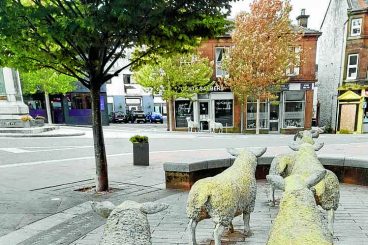On December 21 1846 they ran a story titled ‘A Discovery near Beattock’.
It was a report that a Roman manuscript had been found in a cylindrical brass case in a stone trough in a ruin at the Evan Water, a few miles north of Beattock by workmen constructing the railway.
Fully unrolled it was 30 feet long and two feet broad and all in Latin.
The paper said: “A cursory examination has led some to suppose that it is a copy of part of Livy’s celebrated history; and as it is expected that the whole of the manuscript can be deciphered, perchance some of the lost books of the Roman historian may now be restored to the literary world.
“These interesting relics, which, probably owe their good preservation to the close manner in which their case was sealed up, have been, in the meantime, carefully taken to Moffat Manse, and the Society of Antiquarians has been informed of the discovery.”
Within days the story went viral nationally, appearing in papers in Carlisle and even London.
However, a week later the agent for the railway exposed the set up in a letter to the paper, saying: “I beg distinctly to contradict the statement, or the finding of the said Roman relics: nor are there any interesting relics of the kind at Moffat Manse.”
And the editor also published an apology, admitting they had been caught out.
Tom Welsh unearthed the hoax again recently and has posted more about it on his website, historyregained.net.
He said: “Newspaper hoaxes were quite common in the mid 19th century because it took so long to check out a story that papers eagerly took up a good story, then found they had been set up.
“Basically it was just a bit of fun looking back but such hoaxing was a nightmare at the time – once you could phone around for clarification it was easy to detect them.
“In the Beattock example there is no record of whether people came looking for the finds. The Evan valley was only just being opened by the railway, with little in the way of roads in the vicinity, and newspaper accounts of the railway works refer to a rough path from Moffat.”




















